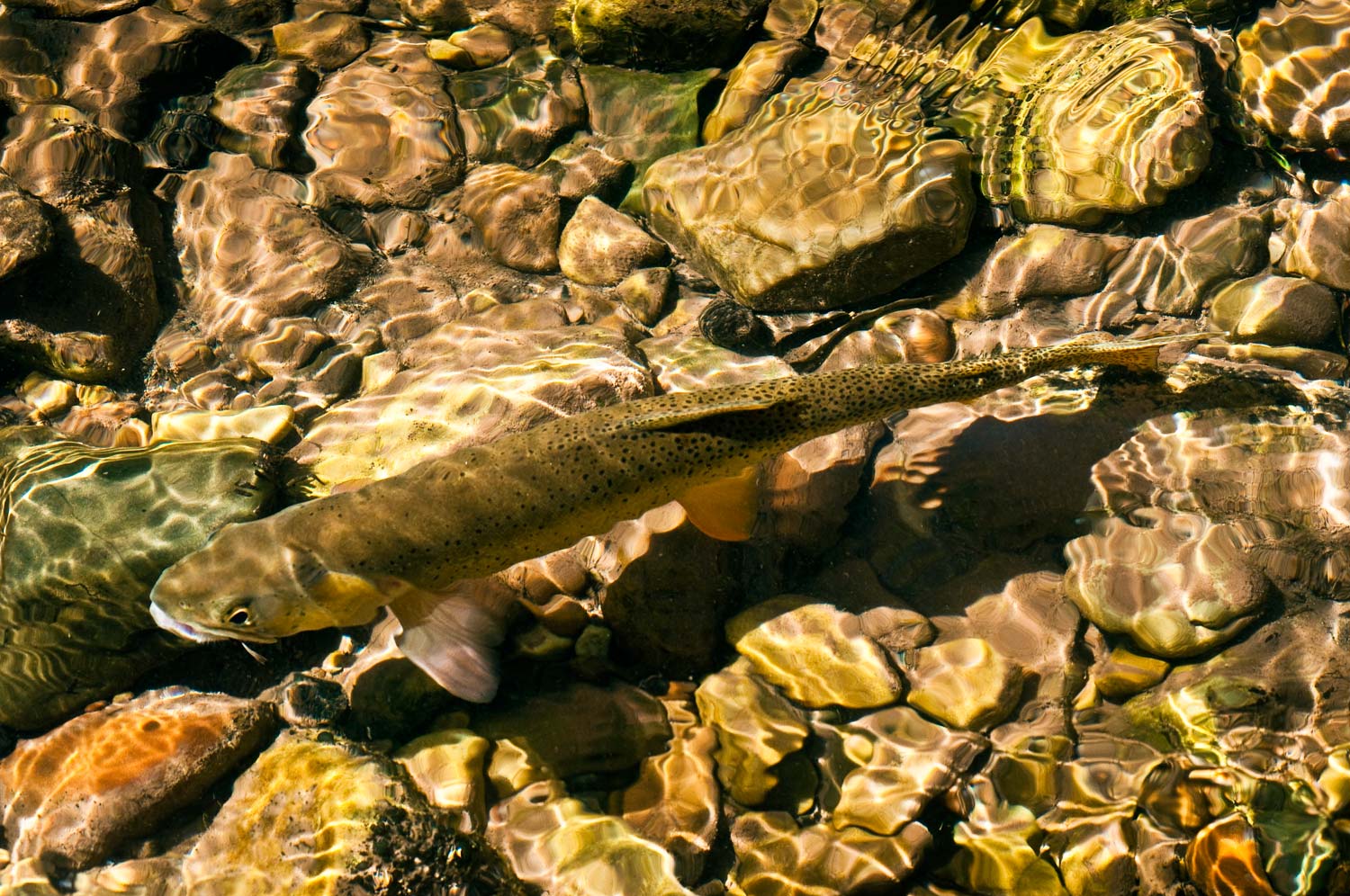One of the things I always stress to my clients is the importance of always keeping an eye out for trout on the water.
The first thing I do when I walk up to a prime piece of trout water, is take a minute or two to scan the water for dark shapes, shadows and subtle movements. I do it before I wet my fly or even my boots for that matter, because I know, if I can spot a trout, I’ll immediately double my chances at getting my rod bent. I also look for trout when I’m wading from one spot to the next. This is where many anglers mess up and get distracted by all the great looking water upstream of them, and then end up missing opportunities to spot and catch trout in transit. I used to spook a ton of trout myself moving from one fishing spot to the next. It still happens but not nearly as much because these days, when I’m on the move, I’m not in a hurry and I take plenty of time to look for trout as I wade.
You have to look for trout to spot them. They don’t shout, “hey, I’m over here”, or wave a white flag at you. It takes time to train your eyes and become proficient at spotting trout. They’re experts at camouflage and often hold out of sight to stay off the radar. If you’re trout eyes are lacking in talent, the only way you’re going to change that, is to start spending twice as much time looking for them when you’re out fly fishing. Don’t tell yourself it’s a waste of time because you’re not good at it. Make a pact with yourself to put more time doing it and push yourself to get better. I often boost my clients sight-fishing confidence by spotting a fish and then asking them to point it out to me. It usually takes a while, but when they finally do spot the fish, it shows them it’s not impossible and they can do it. Just remember that every time you spot a trout on your own, your skills improve. I’ve got a buddy that I is so good at spotting trout, he can walk up to a piece of water, and if there’s a trout around, he’ll have a bead on it in five to ten seconds. He’s also one of the most consistent trout fisherman I know. Seeing fish and catching fish, go hand and hand.
As much as I’ve gone on a tangent about always looking for trout, it’s impossible to spot every fish in a stream. The majority of us catch most of our fish blind casting, but it’s the really smart trout, where getting a visual on them really pays off. On water with lots of educated trout you can’t always afford to blind cast your flies or you’ll risk putting them down. The big the one’s often watch the small fish risk their lives for food and instead hold back and wait for food to enter their safety zone. To catch these trophies, you often have to spot them and make a well planned approach and accurate cast.
The last suggestion I’d like to give everyone trying to get better at spotting trout, is to not get down when you walk up to a hole that you know has fish in it and you fail to spot a single trout. Scan the areas where you can clearly see the bottom first. If you see no signs of life, no worries, because in the process of scanning for fish you’ve just eliminated a great deal of dead water. You now can focus your attention on drifting your flies through the areas where the bottom is blurry and the fish are probably holding anyways. It’s not always about spotting fish, half the battle is identifying where the fish aren’t holding, and not wasting your time drifting your flies there.
Keep it Reel,
Kent Klewein Gink & Gasoline www.ginkandgasoline.com hookups@ginkandgasoline.com Sign Up For Our Weekly Newsletter!
Sign Up For Our Weekly Newsletter!

